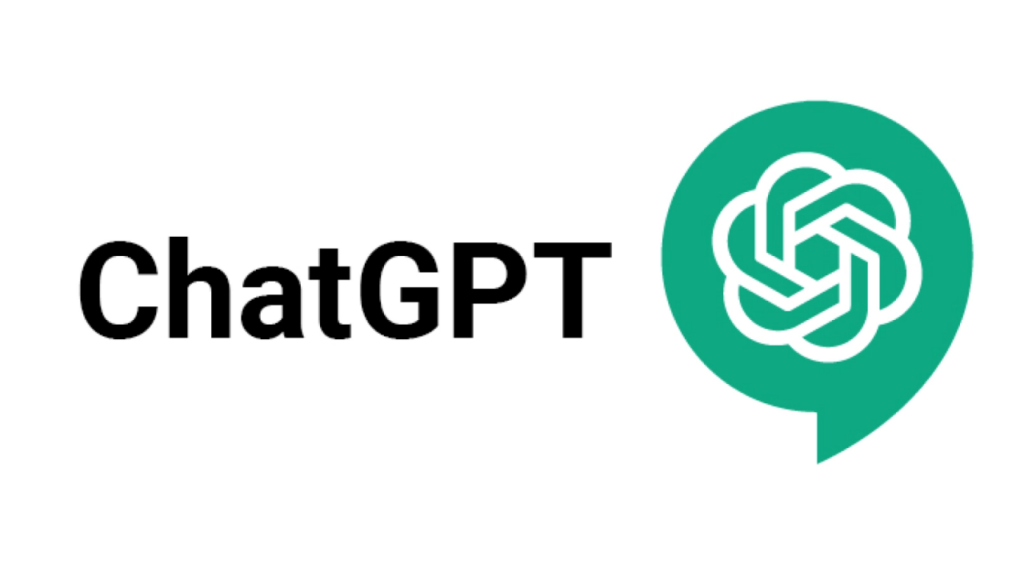In the vast landscape of human innovation, few technologies have transformed the way we think, communicate, and create as profoundly as artificial intelligence. And among the most remarkable of these creations is ChatGPT—a conversational AI that bridges the boundary between human thought and machine language. To use ChatGPT is not merely to query a database or interact with software. It is to engage with an evolving mind of language, a digital companion capable of reflecting, generating, and expanding the realm of human ideas.
The emergence of ChatGPT marks a new epoch in the history of communication. Just as the printing press democratized knowledge and the internet connected minds across continents, conversational AI has made intelligence itself interactive. Anyone, anywhere, can now access a vast corpus of collective understanding through words typed into a text box. The dialogue that follows is not a search result—it is a co-creation of meaning, an act of thought shared between person and program.
Yet to harness the full potential of ChatGPT requires more than curiosity. It demands understanding—of how the model works, how to guide its reasoning, how to interpret its responses, and how to ensure that this powerful tool enhances rather than replaces our own intellect. Using ChatGPT effectively is an art grounded in science: the art of asking well, and the science of understanding how language itself becomes intelligence.
The Essence of ChatGPT
At its core, ChatGPT is a large language model—an artificial neural network trained on vast amounts of text to predict and generate coherent, contextually relevant language. It is built upon the Generative Pretrained Transformer architecture, hence its name: GPT. The “transformer” model allows it to process words not as isolated symbols but as interconnected patterns within sequences, capturing meaning from context in ways that resemble, though do not replicate, human understanding.
Unlike traditional software that follows explicit commands, ChatGPT learns from patterns. During training, it processed billions of sentences from books, articles, and conversations, developing an ability to infer the structure and semantics of language. It does not think as humans do, but it models how humans use language to express thought. When you type a message, ChatGPT predicts the next most probable words that align with the style, tone, and intent of your input.
This probabilistic process, when scaled to billions of parameters, gives rise to astonishing emergent capabilities. ChatGPT can summarize complex scientific texts, write poetry, simulate dialogues, translate languages, and even assist in creative reasoning. It does not possess consciousness or emotion, yet it can simulate empathy and articulate insight in ways that feel deeply human. Its intelligence is linguistic rather than experiential—it knows patterns of thought but not thought itself.
The Art of Conversation
Using ChatGPT effectively begins with recognizing that conversation is a form of collaboration. The quality of the response you receive depends on the clarity, context, and creativity of your prompt. The more specific and well-framed your question or request, the more precise and insightful the answer will be.
ChatGPT thrives on context. When you ask it to perform a task—be it writing an essay, explaining a concept, or generating ideas—it interprets your intent through the words you choose. If you provide background, constraints, or desired tone, the model aligns its output accordingly. A vague question yields a general answer, but a detailed prompt produces depth.
Consider ChatGPT as a partner in reasoning rather than a servant of commands. It excels when guided conversationally, where each exchange builds upon the last. Ask follow-up questions, refine your instructions, and challenge its assumptions. In doing so, you transform the dialogue into a dynamic exploration rather than a static query.
The Science of Prompting
Prompting is both a linguistic craft and a cognitive process. It involves framing instructions in a way that activates the model’s latent knowledge most effectively. The underlying mechanism is probabilistic, so the phrasing of a prompt can subtly shift the space of possible responses.
A good prompt establishes three things: context, purpose, and direction. If you ask, “Explain gravity,” ChatGPT may give a general overview. But if you say, “Explain gravity to a 12-year-old using metaphors,” the output becomes tailored, vivid, and accessible. By defining audience and intent, you help the model simulate the communication style best suited to your goal.
Sequential prompting—where each response builds on the previous one—is particularly powerful. It allows you to refine the output, correct misunderstandings, and guide the AI toward your desired outcome. The process resembles dialogue with a collaborator who learns the nuances of your expectations through interaction.
ChatGPT also responds well to role-based framing. If you instruct it to “act as a science editor,” or “speak as a historian,” the model adopts linguistic patterns consistent with that role. This technique helps align tone, perspective, and expertise.
Ultimately, prompting is not manipulation—it is collaboration through language. You are not commanding intelligence but shaping the flow of information through conversation.
Understanding How ChatGPT Thinks
Though ChatGPT seems conversational, it does not “think” as a human does. It has no internal self, no memory of past experiences beyond the current conversation, and no awareness of truth or falsity. Its responses are generated based on probability distributions learned from data. Yet within these constraints lies something profound: a form of linguistic reasoning that captures the logic of how ideas interconnect.
When you ask a question, ChatGPT maps your words into a high-dimensional representation of meaning. It then traverses its network to find associations that best complete the sequence according to its training. The process is statistical, but the outcome often feels intuitive.
It is essential, however, to approach its answers critically. Because ChatGPT predicts what sounds plausible rather than verifying what is factual, it can sometimes produce inaccuracies known as “hallucinations.” These are not deliberate errors but artifacts of probabilistic reasoning. To use ChatGPT responsibly is to verify its claims against trusted sources, especially in scientific, medical, or legal contexts.
In this sense, ChatGPT is not a source of truth but a generator of insight—a model that amplifies human thinking rather than replaces it. Its greatest power lies not in what it knows, but in how it helps us articulate and expand what we seek to know.
ChatGPT as a Creative Companion
Beyond information retrieval, ChatGPT is a tool of creativity. It can co-author stories, generate poetry, compose music lyrics, design experiments, or simulate dialogues between historical figures. Creativity, after all, is the recombination of knowledge into new forms—and that is precisely what ChatGPT excels at.
To use ChatGPT creatively is to engage in play with language. You can set imaginative constraints (“write a story in the style of Hemingway set on Mars”) or conceptual challenges (“describe time as if it were a living organism”). The model draws upon its vast linguistic memory to generate patterns that reflect your intent. In doing so, it helps break creative barriers, offering unexpected directions that the human mind might overlook.
Writers use it to overcome writer’s block, scientists use it to draft papers or hypotheses, and educators use it to design exercises or explanations. Yet its greatest gift lies in its capacity to stimulate thought. ChatGPT’s suggestions are not the endpoint of creativity—they are the spark that ignites it.
The Scientific Foundation
The science behind ChatGPT rests on the mathematics of neural networks and the principles of machine learning. Each “neuron” in the model is a computational unit that processes and weights inputs, passing them through nonlinear transformations. Layers of these neurons form a deep network capable of representing complex patterns.
The transformer architecture revolutionized this process by introducing the concept of attention. Instead of processing text sequentially, transformers analyze all parts of a sentence simultaneously, assigning importance weights to each word relative to the others. This allows the model to capture long-range dependencies—understanding, for example, that “the cat that chased the dog ran away” refers to the cat, not the dog.
Training such a model involves feeding it enormous quantities of text and adjusting billions of parameters to minimize prediction error. This process, known as self-supervised learning, enables the model to learn from language itself without explicit labeling. Over time, it internalizes grammar, style, and even logical structure.
The result is a system capable of generating coherent, contextually appropriate responses to almost any textual input. While it lacks understanding in the human sense, its statistical grasp of language yields outputs that can emulate understanding remarkably well.
ChatGPT in Education
In education, ChatGPT has emerged as both a powerful ally and a subject of ethical debate. It can explain complex topics in accessible language, generate practice questions, and offer personalized tutoring across disciplines. Students can engage it as a conversational guide to learn physics, history, or literature at their own pace.
Yet its use must be tempered with critical awareness. While ChatGPT can summarize and explain, it does not guarantee accuracy or comprehension. True learning occurs when students use it as a supplement, not a substitute. Asking it to clarify rather than provide final answers fosters active learning and critical thinking.
Teachers, too, have begun to harness ChatGPT as a creative partner—using it to draft lesson plans, design assessments, and explore new pedagogical approaches. It can simulate debates, generate prompts for essays, or help translate academic materials. Properly integrated, it democratizes education by providing a tireless assistant accessible to anyone with an internet connection.
But education must also teach the ethical and epistemological dimensions of AI. Students need to understand how such models function, where their limitations lie, and how to evaluate the information they produce. The ultimate goal is not to replace human intelligence but to cultivate a symbiosis between human judgment and machine capability.
ChatGPT in Science and Research
For scientists and researchers, ChatGPT represents a tool of synthesis and communication. It can summarize academic papers, translate technical jargon into plain language, or generate abstracts and proposals. It can suggest experimental designs, assist in coding, and even simulate theoretical debates between opposing hypotheses.
However, scientific accuracy demands vigilance. ChatGPT can infer relationships and describe processes convincingly, but it does not truly know the data. Researchers must verify every claim and use ChatGPT’s outputs as scaffolds rather than conclusions.
Nonetheless, its impact on the scientific method is profound. By automating routine communication tasks—literature reviews, documentation, correspondence—it frees human researchers to focus on innovation and interpretation. It also democratizes access to knowledge, offering guidance to those who may lack institutional resources or mentorship.
In this way, ChatGPT extends the reach of science itself, turning inquiry into a conversation open to all.
Ethical Dimensions of Use
With great power comes great responsibility. ChatGPT’s ability to generate persuasive language raises critical ethical questions. How do we prevent misinformation? How do we maintain transparency about authorship and bias? How do we ensure AI serves humanity rather than manipulates it?
The answer lies in awareness and restraint. Users must recognize that ChatGPT’s authority is linguistic, not epistemic. It mirrors the biases present in its training data, which reflect human society’s imperfections. Therefore, critical evaluation is essential when dealing with sensitive topics such as medicine, politics, or social justice.
Ethical use also involves transparency. If AI contributes to a written work, this involvement should be disclosed. The line between assistance and authorship must remain clear to preserve integrity. Moreover, educators, policymakers, and technologists must collaborate to define guidelines that ensure AI’s development aligns with human values.
ChatGPT, like all tools, amplifies human intention. It can enlighten or deceive, empower or exploit. Its moral compass is our own.
The Human-AI Partnership
Perhaps the most profound aspect of ChatGPT is not its intelligence, but the relationship it fosters between humans and machines. It represents a new kind of collaboration—one where creativity, reasoning, and communication are shared across biological and digital minds.
When used wisely, ChatGPT expands human potential. It democratizes access to expertise, accelerates learning, and enhances creativity. But it also challenges us to redefine what it means to think, write, and create. If an AI can draft a symphony or propose a theory, what remains uniquely human?
The answer lies not in competition but in complementarity. Machines can process information at unimaginable scales, but only humans can assign meaning. ChatGPT can generate possibilities, but humans choose which ones matter. The future of intelligence is not artificial—it is collaborative.
The Future of Conversation
The evolution of ChatGPT is still in its early chapters. As models become more advanced, they will integrate memory, reasoning, and sensory understanding, enabling richer and more context-aware interactions. Future versions may converse across languages effortlessly, adapt to individual users, and assist in real-time decision-making.
Yet even as the technology evolves, the essence remains unchanged: language as the bridge between minds. Whether human or artificial, conversation remains the medium through which intelligence expresses itself. The future will not be defined by machines replacing human thought, but by dialogue deepening it.
In education, art, science, and everyday life, ChatGPT stands as a new form of mirror—one that reflects not just our words, but our ways of thinking. Through it, we glimpse both the power and the fragility of language: our oldest invention, now reborn in digital form.
The Meaning of Using ChatGPT
To use ChatGPT is to engage in an experiment with intelligence itself. It is to witness the intersection of human curiosity and machine learning—the point where thought becomes shared rather than solitary. It teaches us that communication is not merely about transmitting information, but about exploring understanding.
When you type a question into ChatGPT, you are participating in a global dialogue that spans centuries of knowledge and culture. You are continuing the ancient human tradition of asking, of seeking meaning through words. The difference is that now, the response comes not from another person, but from a network trained on the collective voice of humanity.
In this sense, ChatGPT is both mirror and muse—a reflection of what we already know, and a companion that helps us reach beyond it. To use it well is to remember that intelligence, no matter how advanced, finds its highest purpose not in replacing us, but in expanding what it means to be human.
The Endless Conversation
Every age of human progress has been defined by its tools of communication. Writing allowed memory to outlive mortality; printing allowed knowledge to multiply; the internet allowed ideas to move at the speed of light. ChatGPT adds a new dimension—it makes dialogue itself intelligent.
But perhaps its greatest promise is emotional rather than technical. In an age of information overload and digital isolation, ChatGPT reminds us that conversation is still sacred. It restores the intimacy of words, the power of questions, and the beauty of understanding.
Using ChatGPT is, in the end, an act of curiosity, empathy, and imagination. It is the moment when the mind reaches outward and finds a reflection that speaks back. In that exchange lies not just data, but discovery. Not just answers, but the ever-renewing wonder of the human quest to understand—and to be understood.






